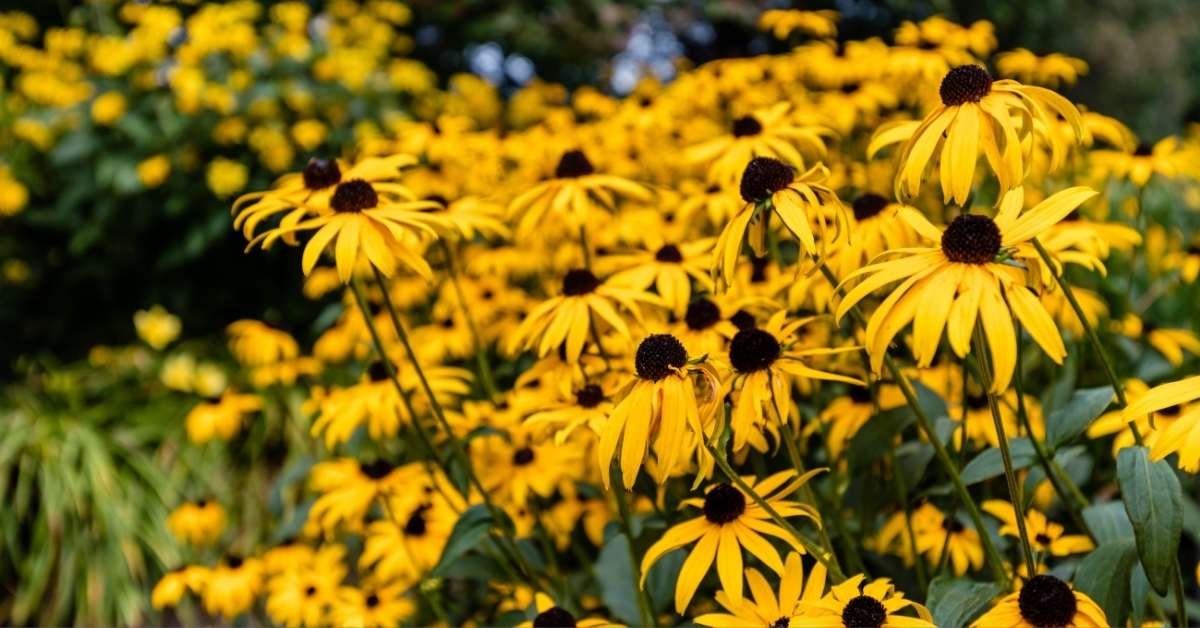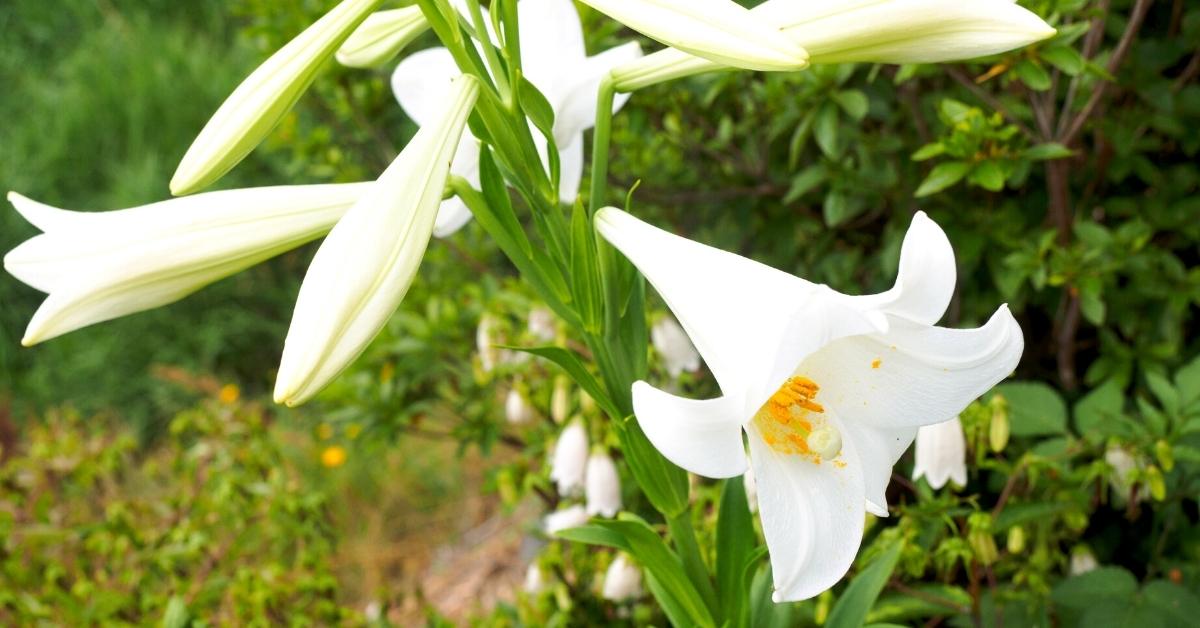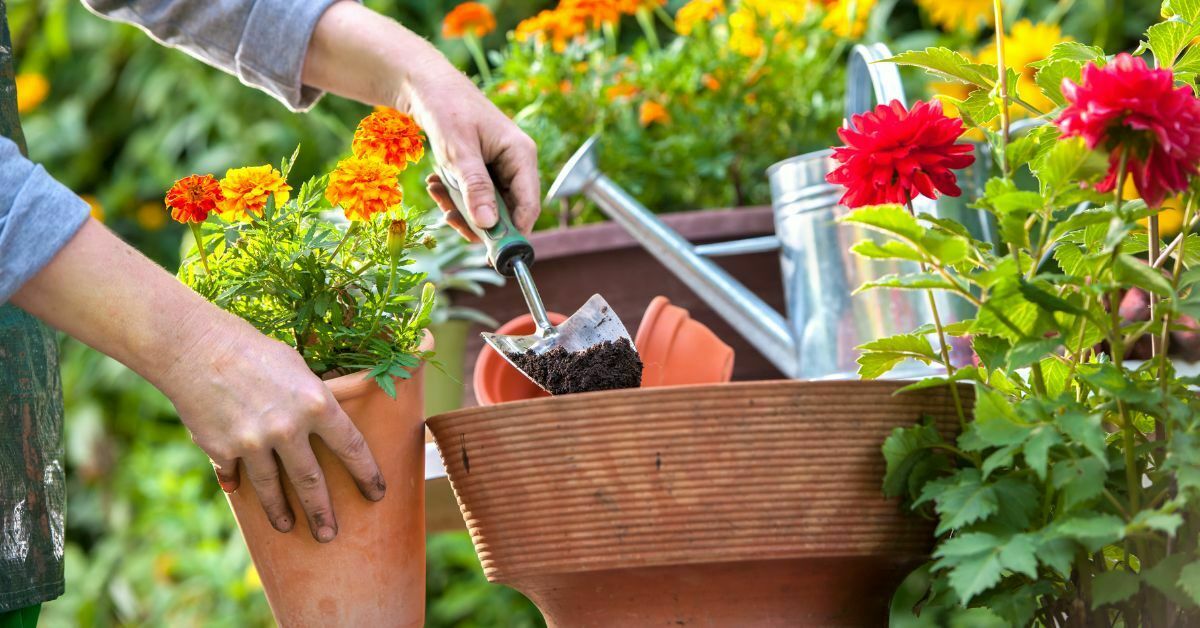Black-eyed Susan plants are a traditional backbone plant for a perennial garden in the mid to late summer. I’ve been growing them for a long time and can confidently say that I’ve never met one I didn’t want to keep in my garden. Keep reading to learn about planting black eyed Susan seeds in your garden.
Olaus Olai Rudbeck (1660-1740), a Swedish physician and botanist, was called after the plant Rudbeckia (the botanical name for black-eyed Susan). While black-eyed is straightforward – the plants have a black eye — none of my sources tell me who Susan was.

Growing Conditions
Giving black-eyed Susan plants ample sun in good soil is the key to growing them. Moderate fertility will provide the most pleasing flower display, so stay away from the lawn’s edges, where lawn food will provide too much nitrogen.
The plants, which are primarily golden and gold in color, range in height from 18 inches to 72 inches tall and bloom from late summer to fall. Shorter types should be planted 18 inches between, while bigger plants over 3 feet tall should be planted 24 inches apart.
Planting Black Eyed Susan Seeds: Propagation
Black-eyed Susans are typically propagated from seed or division for people who like gardening. Because the hybrids do not come true from seed, a division is the best option.
Recommended Varieties
In our gardens, R. fulgida is a 24 to 36-inch tall species that is an excellent and long-lived perennial plant.
‘Goldsturm’ is 24 inches tall and is the most famous of the entire black-eyed Susan family. This is the one that is most often seen in garden photographs. It is an excellent plant for mass planting or naturalizing.
‘Viette’s Little Suzy’ 12 to 18-inch tall form with medium yellow flowers. It starts blooming mid to late summer and blooms right through fall, and the fantastic foliage turns deep mahogany in fall.

Rudbeckia hirta , All of these black-eyed Susan plants are either biennials or short-lived perennials in the garden. Do grow them on lighter soil (sandier) as they will die on wet or clay soils.
‘Indian Summer’ is an award-winning black-eyed Susan, and its massive flowers deserve a spot in every garden. It is an excellent cut flower and shouts its flowering display across the garden. My only regret is that it does not live for very long in my garden.
R. laciniata hortensia or ‘Golden Glow’ This old-fashioned favorite became known as the “Outhouse Plant” in pioneer times because that was usually the place they were found. These are big, vigorous, relatively fast-spreading plants, and this was one place they could grow with impunity.
This plant requires edging every few years to keep it in bounds. It quickly hits 8 feet tall each year and has double golden-yellow flowers for the late summer throughout the fall season.
R. maxima is a hardy perennial that grows to 6 feet tall with clear golden flowers in the fall. This little-known plant is one of my favorite family members.
R. triloba is another tall favorite that reaches 5 to 6 feet with yellow to orange blooms.
Common Problem
If you see the lower leaves of this plant turning brown and twisting, the odds are that you have powdery mildew or one of the numerous leaf spot fungal problems this plant is susceptible to.
You may want to start an organic spray program.

